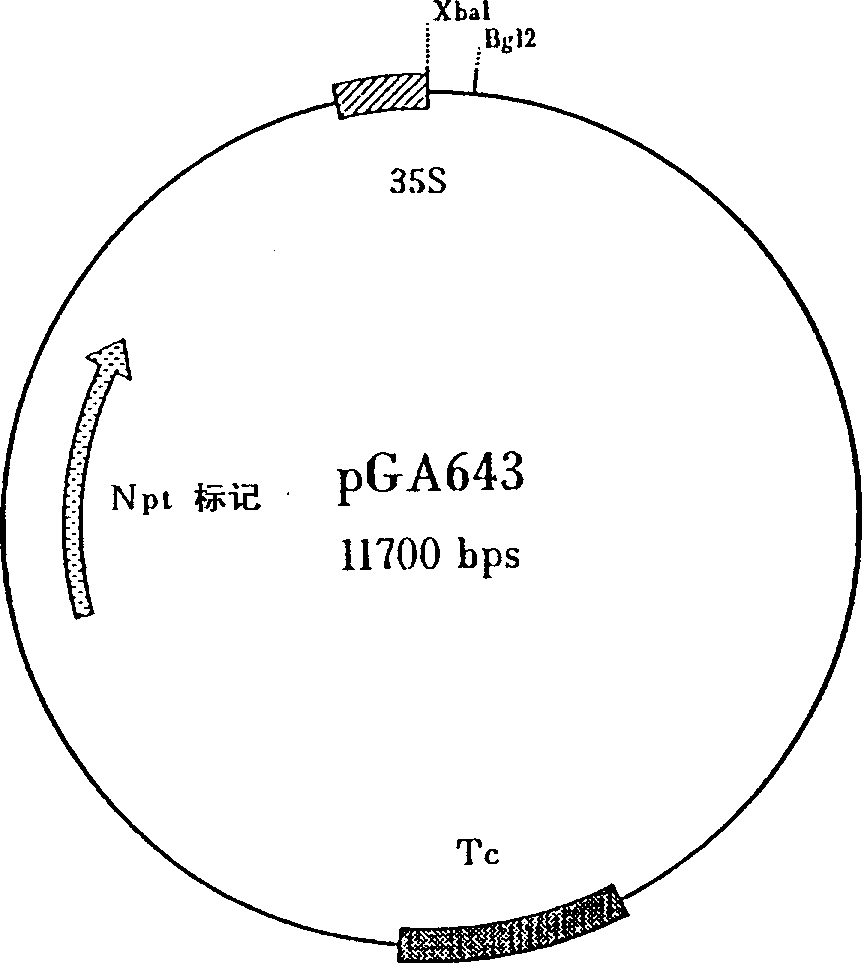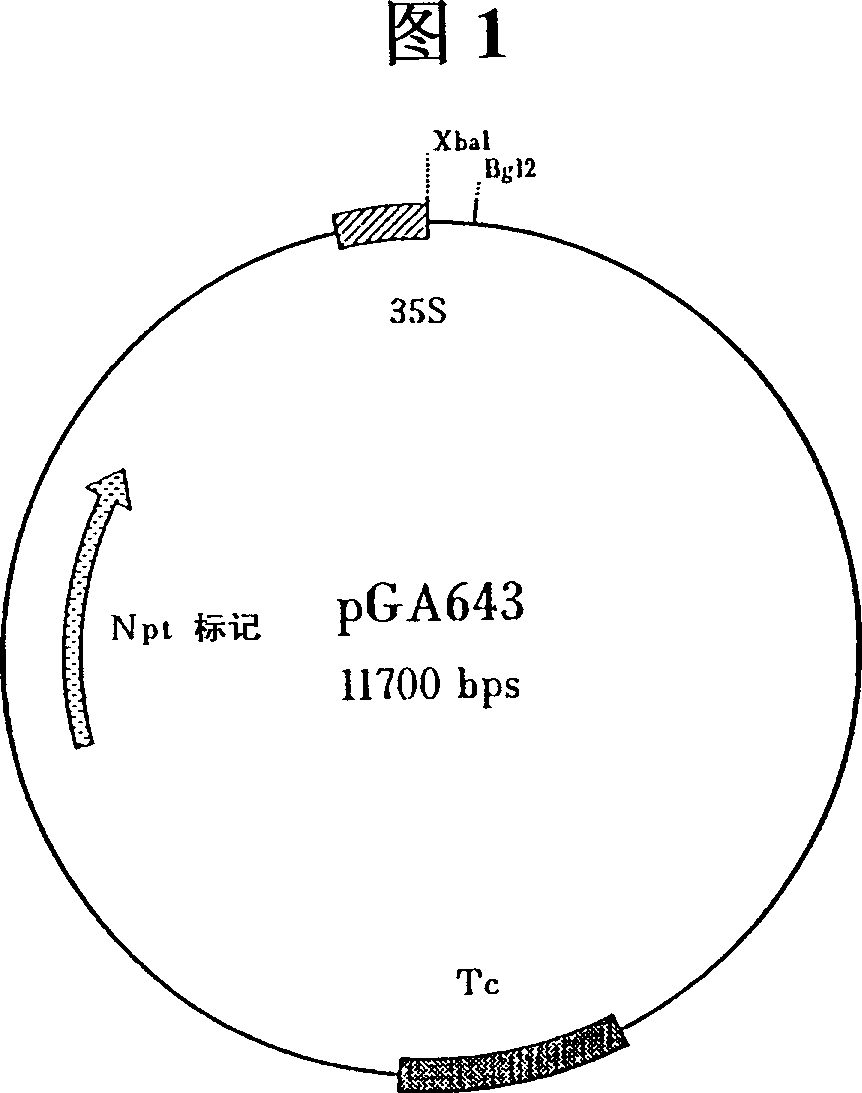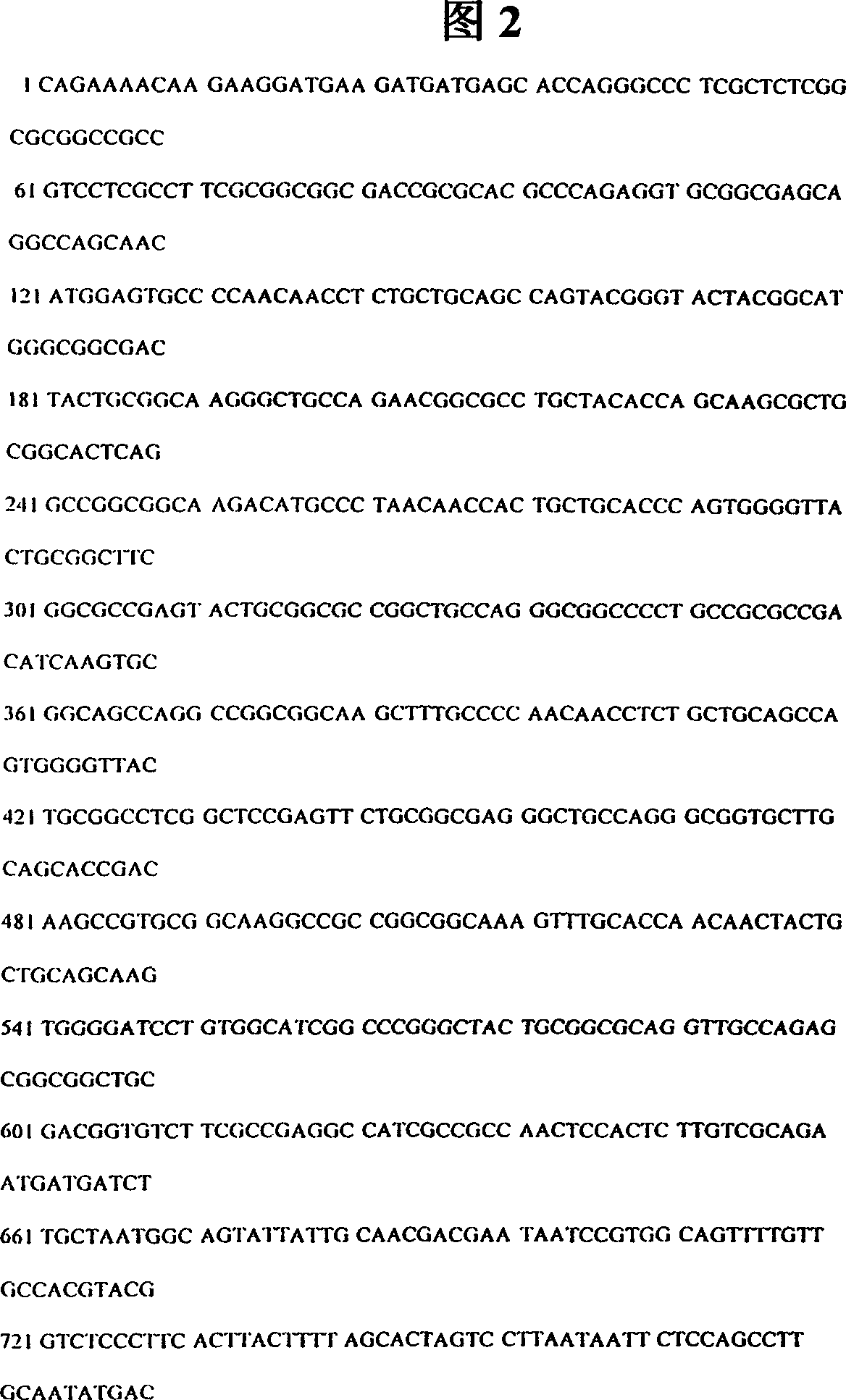Cotton cells, plants and seeds genetically engineered to express insecticidal and fungicidal chitin binding proteins (lectins)
A lectin and insecticidal technology, applied in genetic engineering, plant genetic improvement, biocide, etc., can solve the problems of not revealing cotton pests, not providing, etc.
- Summary
- Abstract
- Description
- Claims
- Application Information
AI Technical Summary
Problems solved by technology
Method used
Image
Examples
Embodiment 1
[0035] The following examples are illustrative of certain embodiments of the inventive subject matter. These examples are illustrative and are not to be construed as limiting the invention in any way. Example 1: Gene
[0036] This study evaluated three different chimeric lectin genes (barley, hevein and nettle). Each chimeric gene contains the cDNA for a specific lectin driven by a promoter active in cotton. For convenience, the CaMV 35S promoter is used, but any promoter proven to be active in cotton, such as the Agrobacterium tumefaciens T-DNA promoter, the Agrobacterium rhizogenes T-DNA promoter or the cotton chlorophyll A / B binding Protein gene promoters (Anderson et al., 1993) are useful. This list is exemplary only and not intended to be inclusive of all promoters. Other useful promoters can be used by those skilled in the art to express barley, hevein and nettle agglutinin in appropriate cotton cells, plants and seeds to control problematic cotton pests such as inse...
Embodiment 2
[0041] Embodiment 2: cotton regeneration
[0042] Methods for establishing and maintaining suspension cultures of cotton embryos are similar to those described by Rangan et al. (U.S. Patent No. 5,244,802, incorporated herein by reference) with further modifications from Rajasekaran et al., 1996 (incorporated herein by reference). For convenience, cotton strain B1654 is used, many other upland or Pima cotton varieties are equally useful, and those skilled in the art can make different variety choices according to the needs of their research projects.
[0043]Treat the seeds with 70% ethanol for 3 minutes, and then treat the seeds with 20% CLOROX solution (1% available chlorine) containing 0.01% surfactant TWEEN-20 for 20 minutes to carry out surface sterilization. (TC agar, Hazleton Biologics, Lenexa, KS) White' The seedlings were grown on s medium (Singh and Krikorian, 1981). First, the embryogenic callus culture was established from the seedling explants according to the me...
Embodiment 3
[0045] Free floating cells and large clumps (≥840 μm) were regularly removed weekly to enrich for small volume, isodiametric, cytoplasmically dense and highly embryonized suspension cultures. Two days before use, these cultures were subcultured in 250 ml Erlenmeyer flasks containing 40 ml maintenance medium. The cell suspension cultures used in our experiments were rapidly growing embryogenic cells, doubling their net weight within 4-6 days (entering logarithmic growth phase after two days of subculture). All cell suspension cultures used for biolistic transformation experiments were cumulatively aged 3-4 months. Example 3: Biolistic transformation of embryogenic cotton cultures
[0046] Three plasmids (barley agglutinin coding region in pGA643, hevein coding region in pGA643, nettle agglutinin coding region in pGA643) were coated with 1.0 μM gold microparticles, followed by a modified helium A driven biolistic device (PDS, 1000 / He; BioRad) was injected into embryogenic cott...
PUM
 Login to View More
Login to View More Abstract
Description
Claims
Application Information
 Login to View More
Login to View More - R&D Engineer
- R&D Manager
- IP Professional
- Industry Leading Data Capabilities
- Powerful AI technology
- Patent DNA Extraction
Browse by: Latest US Patents, China's latest patents, Technical Efficacy Thesaurus, Application Domain, Technology Topic, Popular Technical Reports.
© 2024 PatSnap. All rights reserved.Legal|Privacy policy|Modern Slavery Act Transparency Statement|Sitemap|About US| Contact US: help@patsnap.com










